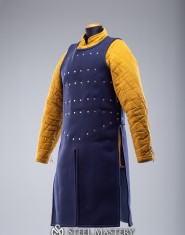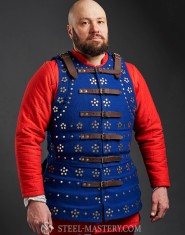Über Brigantinen
Every item is handcrafted and made-to-measure by medieval brigandine patterns. We make every item according to historical analogues, which are kept in museums or shown on the medieval paintings, gravures or manuscripts.
There are posted proposals on various brigandine designs on our site. At choice of the customer are presented regional variants of brigandine in the Middle Ages. There is also a variant of brigandine type armor that was used by Mongols. Brigandines offered by us consider the lifetime of one or another sample. Some of them, as Visby brigandine, are made by the reconstruction of famous archaeological finds. The practical use of this type of armor can be very various. Our samples of brigandines are suitable both for historical reconstruction, and for participants in SCA, and for filming a movie or advertisement. In each case, the order will be made individually taking into account customer’s requirements.
Upper part of brigandine (tire) is sewn only from natural materials:
Fasteners are either from the front or on the sides or from backside.
To order one of these brigandine, you need to do few simple steps:
- Open the wished item;
- Choose required type and thickness of metal plates;
- Choose cover outer layer and lining (cotton, linen) for your brigandine;
- Define metal for buckles (steel or brass);
- Select required rivets;
- Choose decoration for your armour (festoons, trimming).
- Choose your size
If you have any difficulties with choosing, please contact our manager. We’ll help you to define your size, required model and its complement.
Once all options have chosen, you need to add item to the cart and make a payment. After that, manager will contact you with individual measurement request and specification of order’s details.
All samples of presented brigandines are perfect for participation in the tournaments of medieval fencing, historical festivals, bohurts and reenactment events. Depending on the complement, such defense is compliant to the standards and rules of such social movements, as SCA (The Society for Creative Anachronism), HEMA (Historical European Martial Arts), HMB (Historical medieval battles).
If you didn’t find the wished brigandine in this section, we can make it individually for you. Just send picture with detailed description to [email protected]. Then we will quote you and discuss details of order.
Basically, brigandine is an armour, where metal plates are sewn or riveted to the base. Typical model of the XIV-XV centuries had small plates, which overlapped each other. Thick canvas or leather usually were used as base.
This body defense had so good protective features, so it existed as protective gear in many countries during almost four centuries. It provided steady protection against stabs and slashes. At the same time, armour did not hinder the movements (generally, due to plates layout), and provided a warrior with good mobility to attack and respond for a treat. Front and side cuts contributed greatly to it as well. Moreover, unlike the chainmail brigandine did not ding, what was an advantage for a fighter in some situations.
Rivet head on the outer side of brigandine could create certain pattern. Sometimes, they were decorated with embossing or gilding. Quite often brigandines were being covered with expensive fabrics, such as velvet or silk. Length could vary from waist-level armour to knee-length. First of all, this factor depended on the combat arm and battle technique.
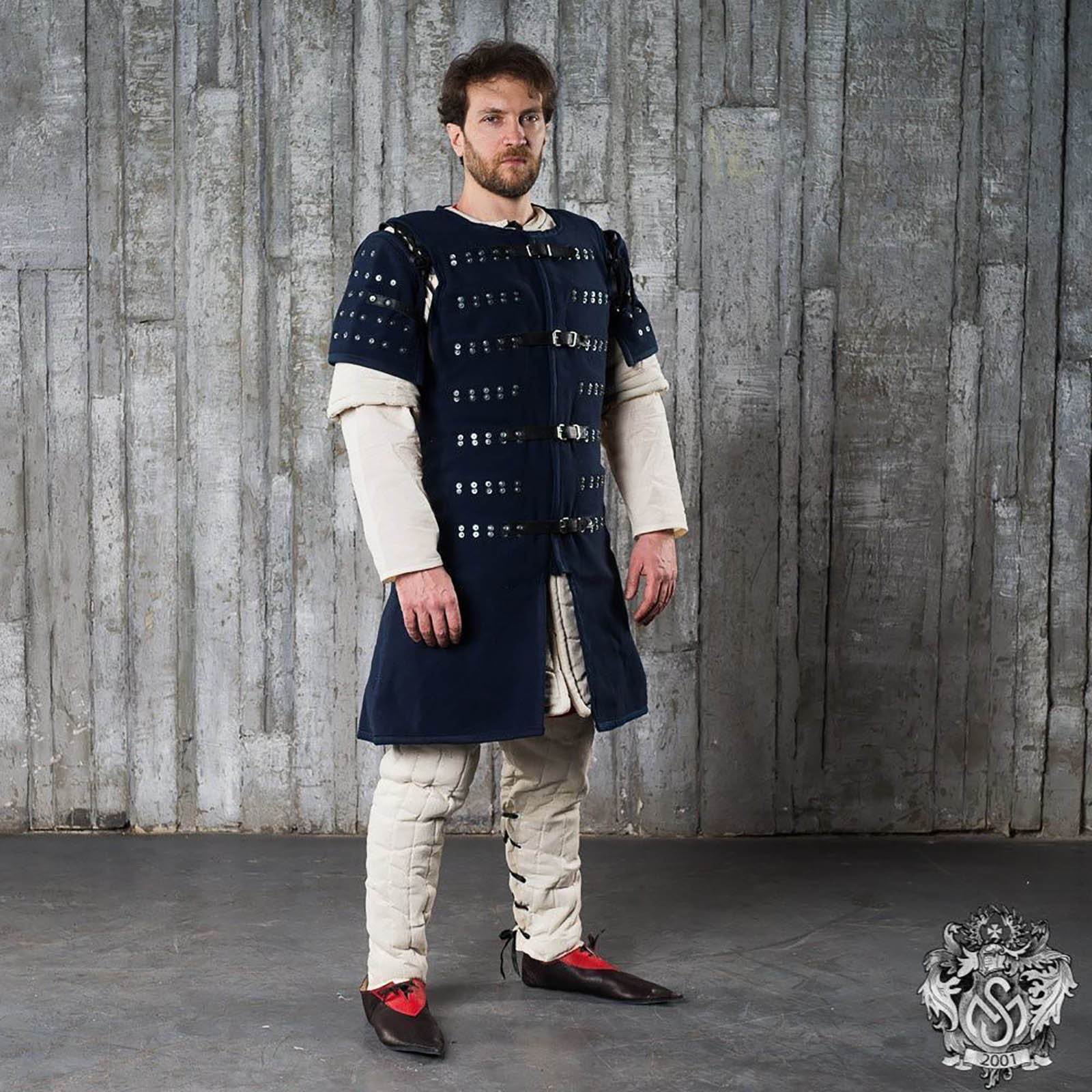
Common infantryman had brigandine with plain bottom edge. Knights of higher social classes could afford such types of decorations, as festoons or beautiful trimming.
Brigandine took on great importance in Asian countries, such as Persia, India, Japan. Mongolian armour Khatangu-degel or so-called “vest- shell’ gained the largest popularity. One of typical feature was a pattern of rivets on the base with contrast edging. Square or leaf-shaped spaulders and elongated tassets were used together with khatangu-degel. Mounted warrior in such armour was almost completely covered with body protection.
Often, brigandine was combined with chainmail and plate bracers and greaves. We are referring to brigandine plate armour, which was spreading from the XIV century.

-0-2-0-1-2-300x400.jpg?v=1746523880)
-0-2-0-1-2-300x400.jpg?v=1746523880)
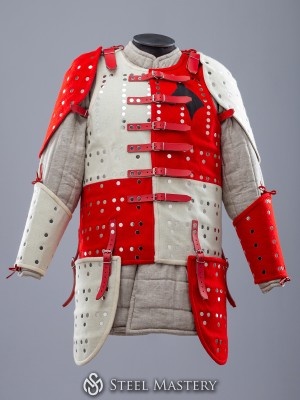
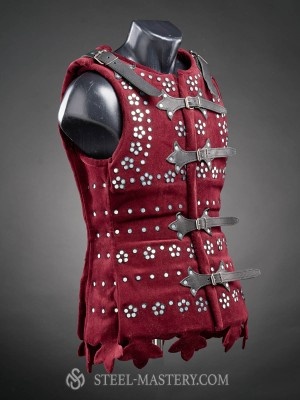
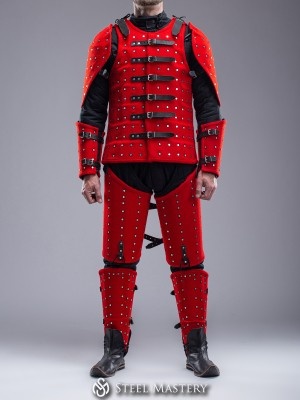
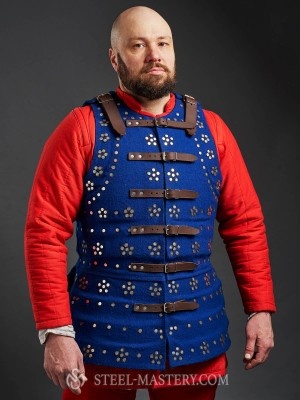
-0-2-0-1-2-300x400.jpg?v=1746523880)
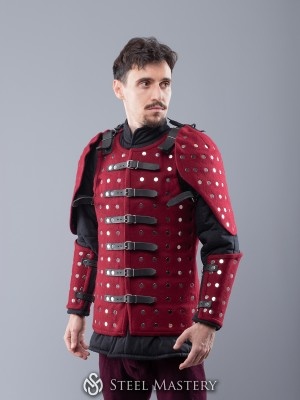
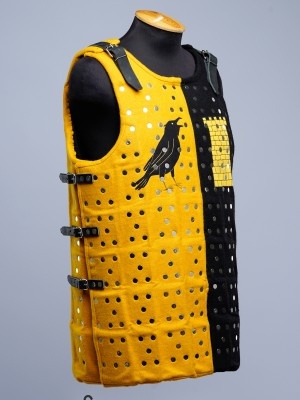
-0-2-0-1-2-300x400.jpg?v=1746523880)
-0-2-0-1-2-300x400.JPG?v=1746523880)
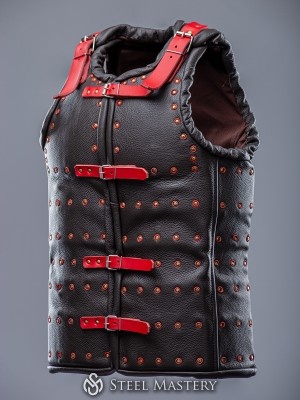

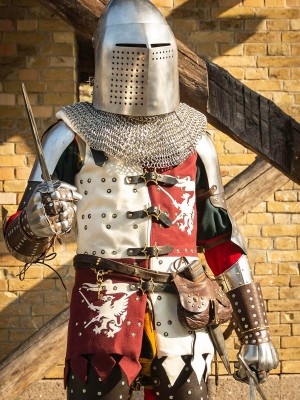
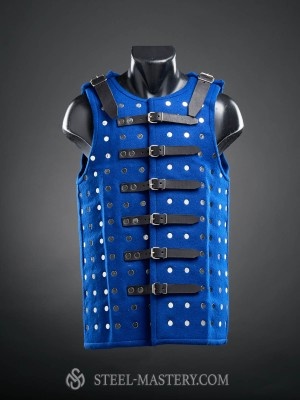
_from_Hohenschwangau_castle,1360_1450_(14___15_century)-0-2-0-1-2-300x400.jpg?v=1746523880)
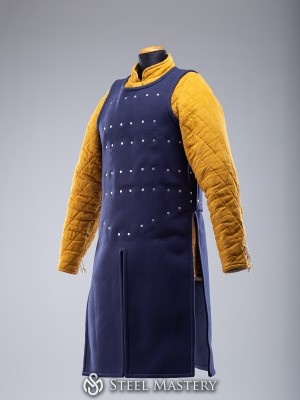
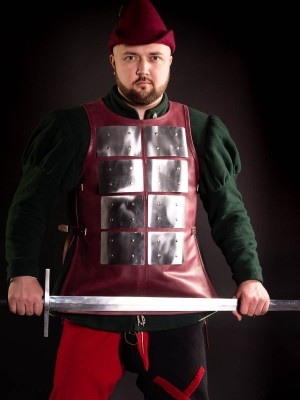
-0-2-0-1-2-300x400.jpg?v=1746523880)
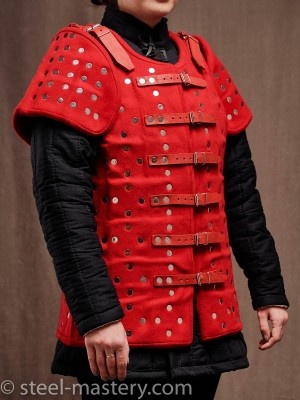
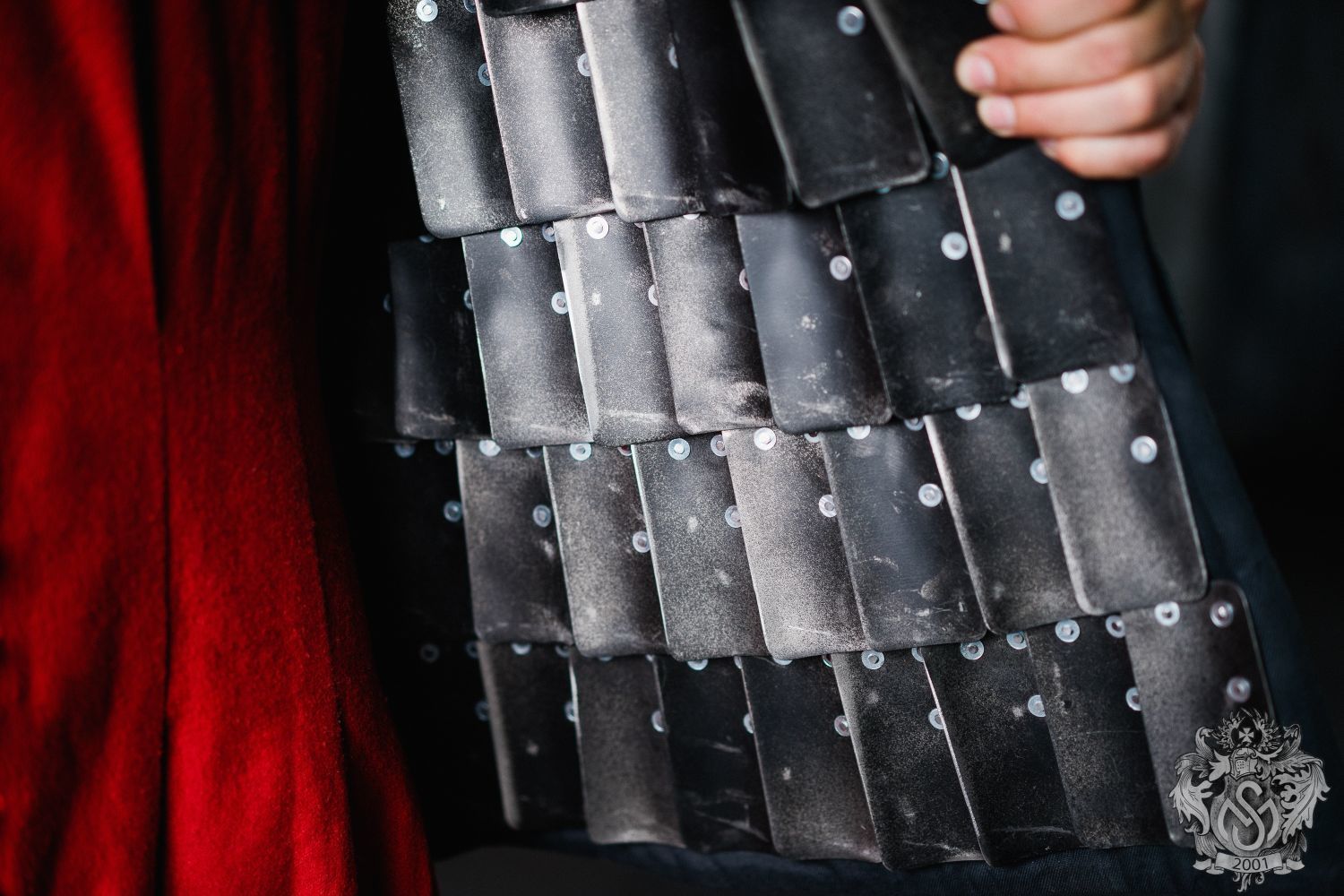
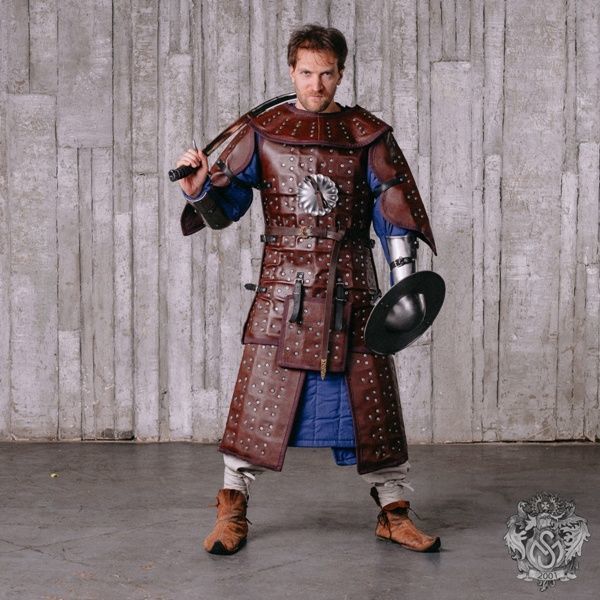
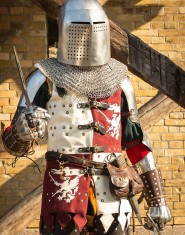
-0-1-2-185x235.jpg)
